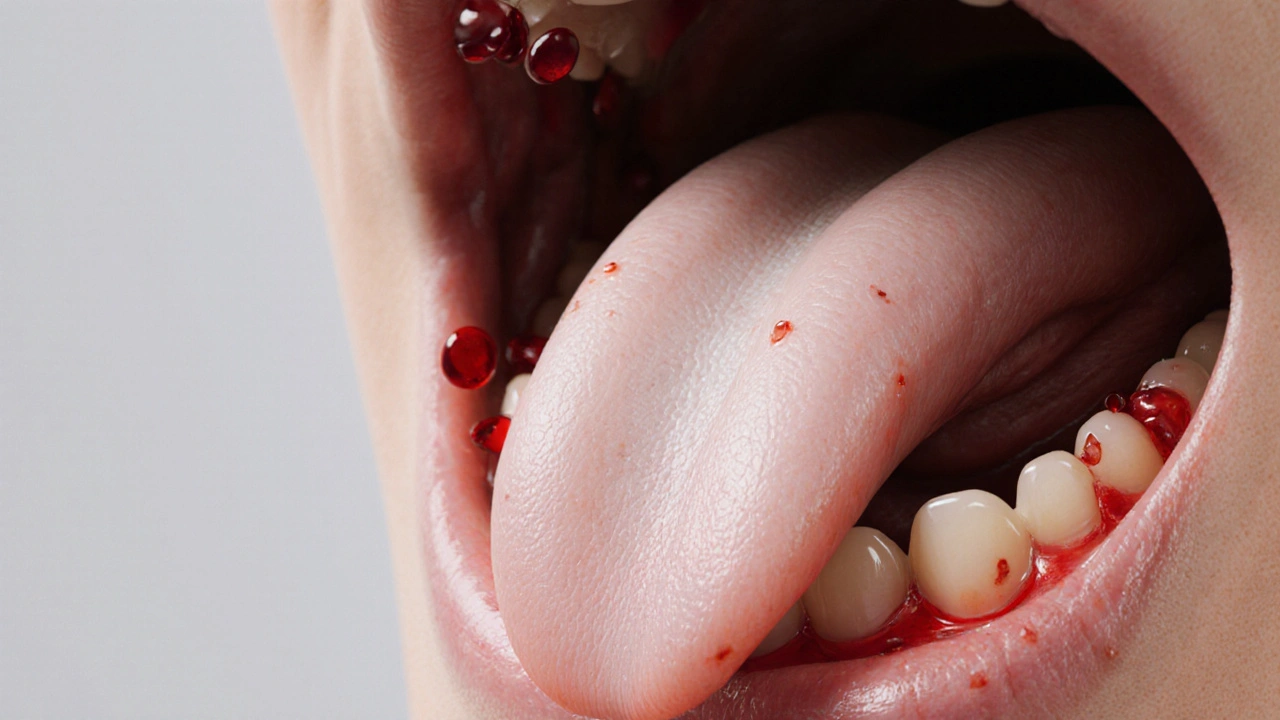
Anemia & Dental Health Checker
Your Results
Ever wondered why your gums bleed easily or your tongue feels sore even when you brush carefully? The answer often lies deeper than your toothbrush - it can be a sign of anemia and other nutrient shortfalls. This article unpacks the link between blood‑making problems and oral health, shows you what to look for, and gives practical steps to keep both your blood and your smile in shape.
What is anemia?
Anemia is a condition where the body lacks enough healthy red blood cells or hemoglobin, the protein that transports oxygen. Without adequate oxygen, tissues tire out, and a range of symptoms appear, from fatigue to pale skin. The most common form is iron‑deficiency anemia, but deficiencies in vitamin B12, folate, and even chronic disease can cause similar blood‑shortfalls.
How anemia shows up in your mouth
Oral tissues are among the first places the body signals a lack of oxygen or nutrients. Here are the typical red‑flag signs:
- Pale or smooth tongue - often called glossitis inflammation and discoloration of the tongue linked to nutrient deficits. The tongue may look pink‑white and feel sore.
- Recurrent mouth ulcers - tiny painful lesions that pop up on the inner cheeks or lips.
- Bleeding gums - even light brushing can cause spots of blood.
- Angular cheilitis - cracks at the corners of the mouth, often tied to low iron or B12.
- Delayed healing after dental work - surgeries or extractions take longer to close.
These issues aren’t just cosmetic; they signal that your blood can’t deliver enough oxygen or that the supporting nutrients for tissue repair are missing.
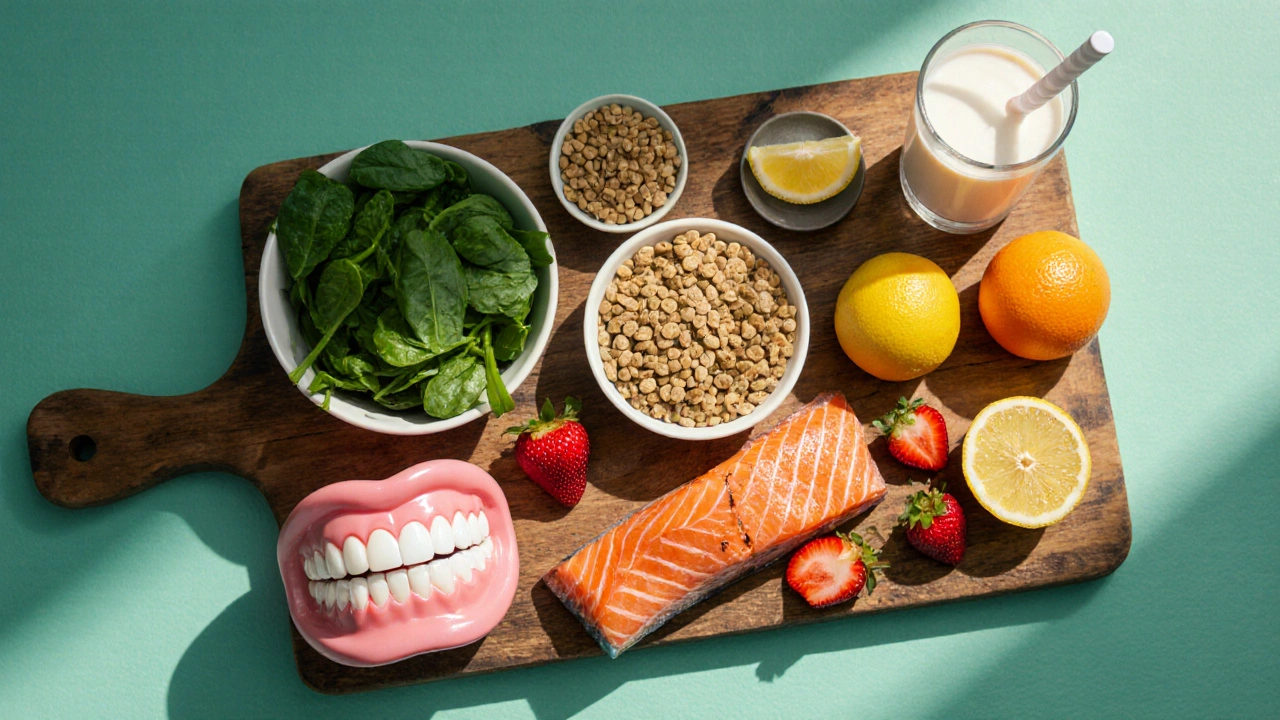
Key nutrients that bridge anemia and dental health
The bridge is built by four main nutrients. Their roles overlap - they help make red blood cells and also keep gums, enamel, and soft tissues healthy.
| Nutrient | Role in Blood | Role in Oral Health | Top Food Sources | Recommended Daily Intake* |
|---|---|---|---|---|
| Iron essential mineral for hemoglobin synthesis | Builds hemoglobin, transports oxygen | Maintains gum integrity; deficiency leads to bleeding and inflammation | Red meat, lentils, spinach, fortified cereals | 8mg (men), 18mg (women) |
| VitaminB12 cobalamin, crucial for red blood cell maturation | Enables red blood cell formation, nerve health | Prevents glossitis, supports mucosal healing | Clams, liver, dairy, fortified plant milks | 2.4µg |
| Folate B‑vitamin needed for DNA synthesis | Works with B12 to produce mature red cells | Helps repair oral epithelial cells, reduces ulcer risk | Leafy greens, beans, citrus, fortified grains | 400µg (adults) |
| VitaminC antioxidant that aids iron absorption | Boosts iron uptake, supports collagen for blood vessel walls | Strengthens gum connective tissue, fights gum disease | Citrus fruits, strawberries, bell peppers, broccoli | 90mg (men), 75mg (women) |
*Values are based on Australian National Health and Medical Research Council guidelines (2023). Adjust for pregnancy, lactation, or specific medical advice.
Dietary strategies to boost both blood and oral health
Eating the right mix of foods tackles two problems at once. Here’s a practical weekly plan:
- Start the day with iron‑rich breakfast: fortified oatmeal topped with sliced strawberries (vitaminC) and a handful of pumpkin seeds.
- Mid‑morning snack: Greek yogurt with a drizzle of honey - adds protein and a bit of calcium for teeth.
- Lunch: Quinoa salad with chickpeas, spinach, orange segments, and a lemon‑olive‑oil dressing. The lemon provides vitaminC to aid iron absorption.
- Afternoon boost: A small piece of dark chocolate (70% cocoa) plus a few Brazil nuts - the chocolate has iron, nuts supply B12 if they’re fortified.
- Dinner: Grilled salmon (B12) with roasted sweet potatoes and steamed broccoli (vitaminC). Pair with a side of lentil mash for extra iron.
- Evening snack: A glass of fortified plant milk (B12 & calcium) and a banana.
Hydration matters too. Drinking water throughout the day helps wash away food particles and keeps saliva flow steady, which is essential for delivering nutrients to oral tissues.
Dental care tweaks for people with anemia
If you’re already fighting low iron or B12, a few tweaks can reduce mouth problems:
- Gentle brushing with a soft‑bristle toothbrush - harsh scrubbing can worsen fragile gums.
- Fluoride toothpaste to protect enamel while your body works on tissue repair.
- Alcohol‑free mouthwash containing chlorhexidine - helps control bacterial overgrowth without irritating dry mouth.
- Weekly flossing - even if gums bleed a little, floss removes plaque that would otherwise fuel infection.
- Regular dental check‑ups every six months; ask the dentist to monitor gum color, bleeding time, and healing after any procedures.
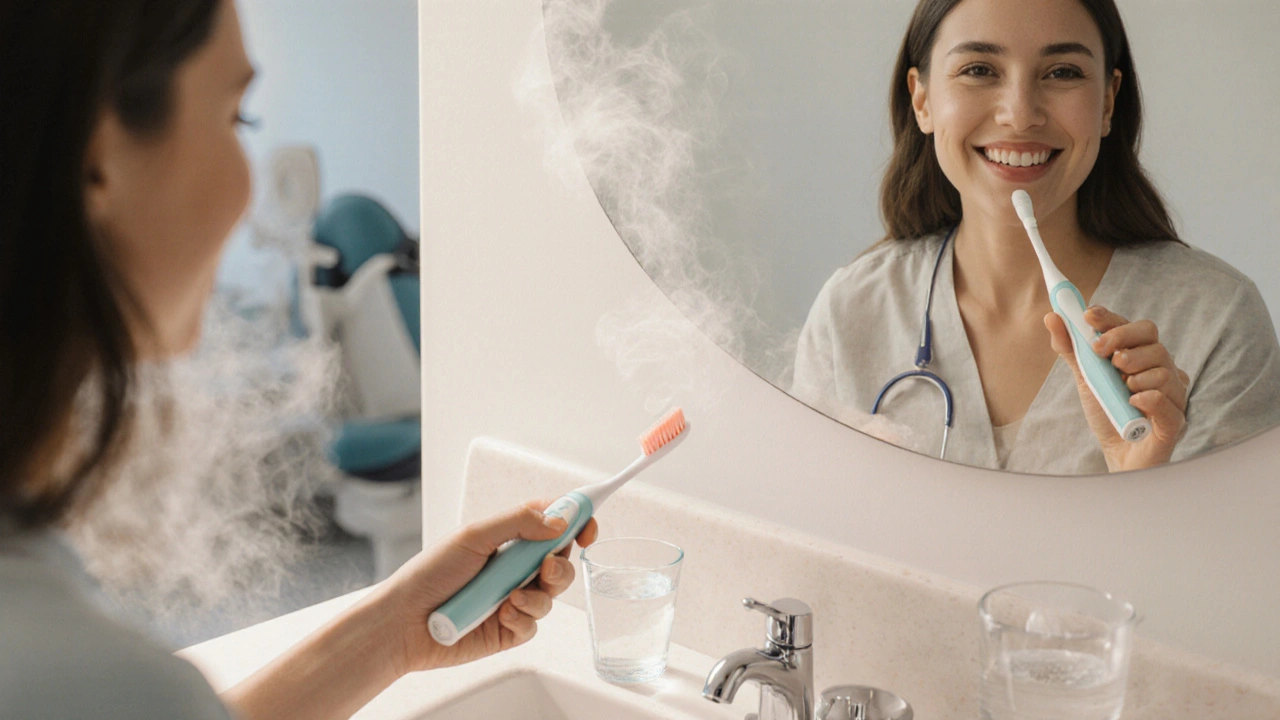
When to see a doctor or dentist
Some signs demand prompt professional attention:
- Persistent pale or smooth tongue lasting more than two weeks.
- Frequent mouth ulcers that don’t heal within ten days.
- Bleeding gums that continue despite improved brushing technique.
- Feeling unusually short of breath or dizzy after meals.
- Lab tests showing hemoglobin below 12g/dL (women) or 13g/dL (men).
In such cases, a blood test can pinpoint which nutrient is lacking, and a dentist can assess whether a local infection is compounding the problem. Treating both sides simultaneously speeds recovery.
Key takeaways
- Anemia isn’t just about fatigue - it often shows up first in the mouth.
- Iron, vitaminB12, folate, and vitaminC are the nutritional trio‑quartet linking blood health to gums, tongue, and healing.
- Balanced meals that pair iron sources with vitaminC boost absorption and protect oral tissues.
- Gentle dental habits and regular check‑ups keep gum disease from spiraling when your blood is low.
- Seek medical and dental advice early if mouth symptoms persist; early treatment prevents long‑term damage.
Frequently Asked Questions
Can iron supplements fix gum bleeding?
Supplements help when the bleeding is due to iron‑deficiency anemia, but they work best alongside a proper diet and gentle oral care. If gums continue to bleed despite iron repletion, other factors like periodontal disease may be involved.
Is a vegan diet risky for dental health?
A well‑planned vegan diet can meet iron and B12 needs, but B12 is primarily animal‑based. Vegans should use fortified foods or a B12 supplement to avoid the oral symptoms linked to its deficiency.
Why does vitaminC matter if I already take iron?
VitaminC converts dietary iron into a form the gut absorbs more efficiently. It also strengthens gum collagen, reducing inflammation-so together they protect both blood and mouth.
What simple home remedy can soothe a sore tongue caused by anemia?
Rinse with a warm salt‑water solution (½ teaspoon of salt in 8oz of water) two to three times daily. It reduces inflammation while you work on correcting the underlying nutrient gap.
Should I avoid coffee if I’m iron‑deficient?
Coffee contains polyphenols that can inhibit iron absorption. If you love coffee, enjoy it an hour after iron‑rich meals to minimize the effect.
6 Comments
Donny Bryant
October 20, 2025 at 10:34 AM
Great info, thanks for the clear list. I never realized my cracked mouth corners could be a sign of low iron. I’ll try adding lentils and orange slices to my meals. Simple steps can make a big difference.
kuldeep jangra
November 1, 2025 at 06:34 AM
Reading through this article reminded me of the first time I walked into a dentist’s office with persistent mouth ulcers and no clear answer. I was told it was just a sore, but the real culprit turned out to be a silent iron‑deficiency anemia that had been gnawing at my energy for months. Once the blood tests confirmed low ferritin, my dentist and doctor teamed up, recommending a diet rich in spinach, lentils, and citrus fruits to boost iron absorption. The transformation was remarkable – not only did my ulcers start healing within two weeks, but my gum bleeding stopped, and I felt less fatigued throughout the day. What struck me most was how interconnected our body systems are; the oral cavity truly acts as a window into systemic health. The article’s emphasis on vitamin B12 and folate is spot‑on because I also discovered a folate deficiency that was contributing to a pale, sore tongue. Adding fortified cereals and leafy greens to my breakfast made a noticeable difference in the texture of my tongue within days. Another key takeaway is the importance of gentle dental care – I switched to a soft‑bristle toothbrush and a fluoride toothpaste, which reduced irritation. Regular flossing, even if it initially caused a bit of bleeding, helped clear plaque that could exacerbate inflammation. Keeping hydrated also played a role; saliva carries nutrients to gum tissue and helps wash away irritants. I also appreciated the practical weekly meal plan – having a structured guide made it easier to stay consistent. Pairing iron‑rich meals with vitamin C sources, like a strawberry‑topped oatmeal, truly enhanced iron uptake. In my experience, avoiding coffee around iron‑rich meals prevented the usual absorption dip I used to notice. Finally, the article’s suggestion to seek professional help early cannot be overstated – early detection saved me months of discomfort and prevented potential complications. Overall, this piece is a thorough roadmap for anyone suspecting a link between anemia and dental issues, and I’m grateful for the actionable steps outlined.
harry wheeler
November 13, 2025 at 02:34 AM
Interesting how anemia can affect the mouth It makes sense that low oxygen hampers tissue repair You should try gentle brushing and add vitamin C to meals
faith long
November 24, 2025 at 22:34 PM
I get what you’re saying and I’m fed up with people ignoring obvious signs! Bleeding gums aren’t just “normal” and those cracked corners scream iron deficiency. Stop brushing like a maniac and switch to a soft brush now. Your diet needs iron‑rich foods and a splash of citrus – that’s non‑negotiable. If you keep dismissing the symptoms, you’re just digging the hole deeper for yourself.
Danny Wakefield
December 6, 2025 at 18:34 PM
Look, what they don’t tell you is that the big pharma industry loves you to stay clueless about iron‑deficiency because it drives supplement sales. The “gentle brushing” tip is fine, but the real fix is a raw food diet, zero processed junk, and avoiding any hidden iron blockers like phytates. Also, keep an eye on water fluoridation – it can mess with nutrient absorption. Stay skeptical and do your own labs, friends!

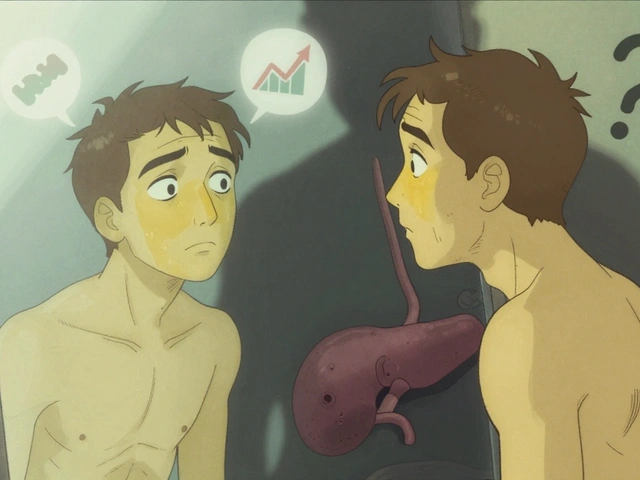
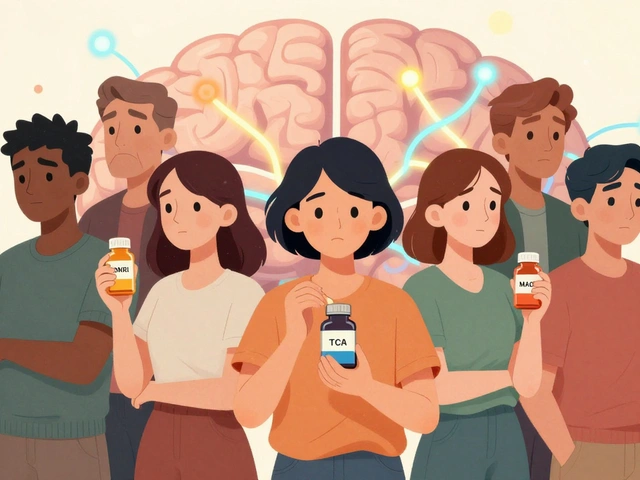
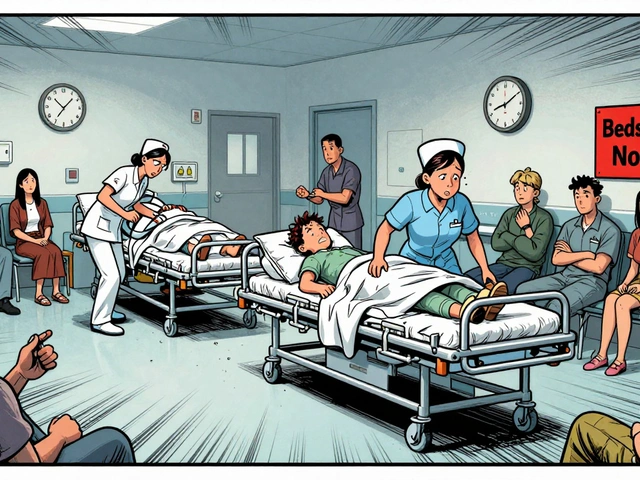
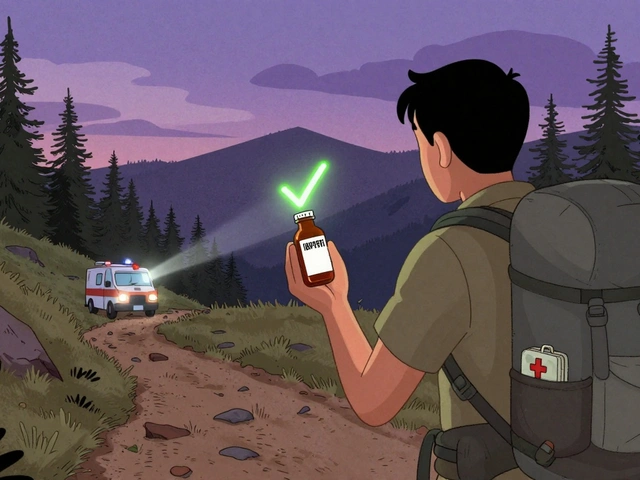
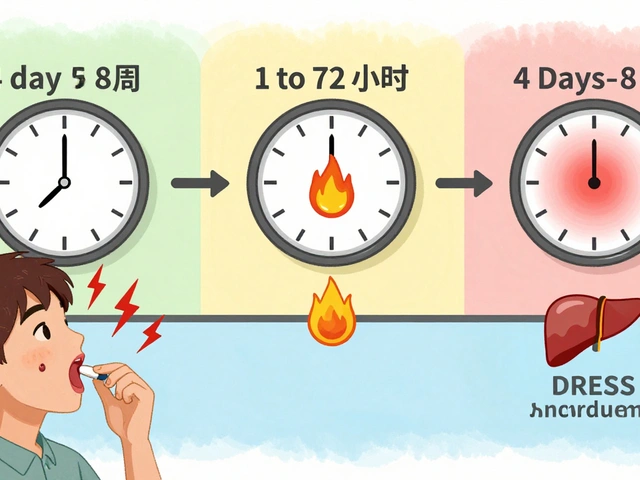
Ira Bliss
October 8, 2025 at 14:34 PM
Wow, this rundown is super helpful! 😄 It’s crazy how something like iron deficiency can show up as bleeding gums before you even feel tired. Pairing iron‑rich foods with vitamin C is a game‑changer for both blood and smile. Keep sharing these practical tips – they really empower us to take charge of our health! 🙌